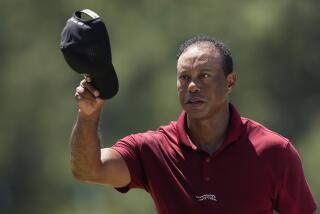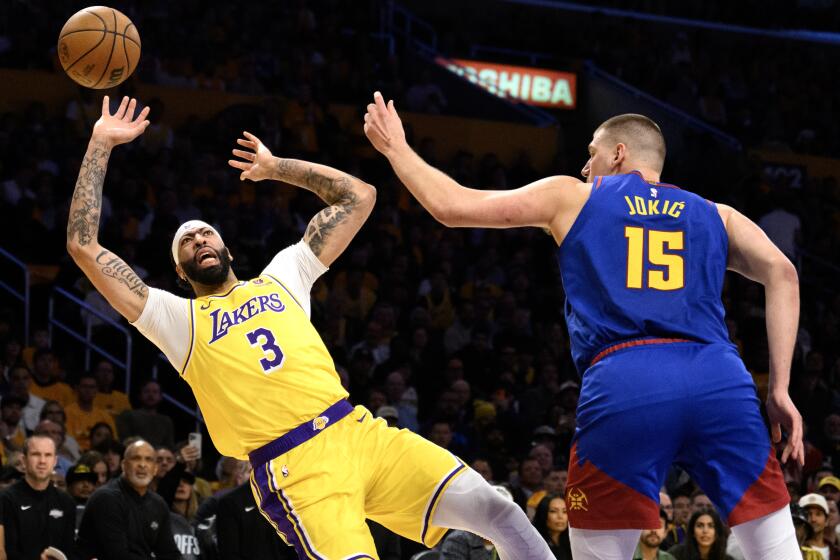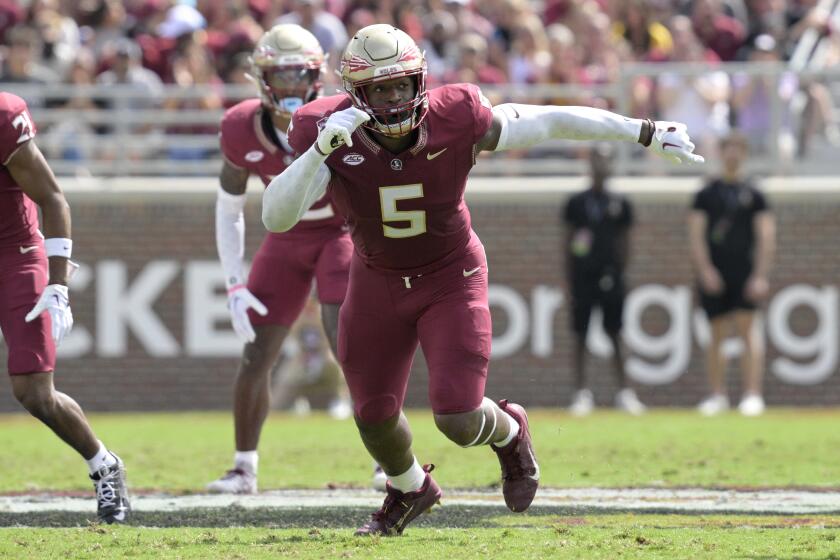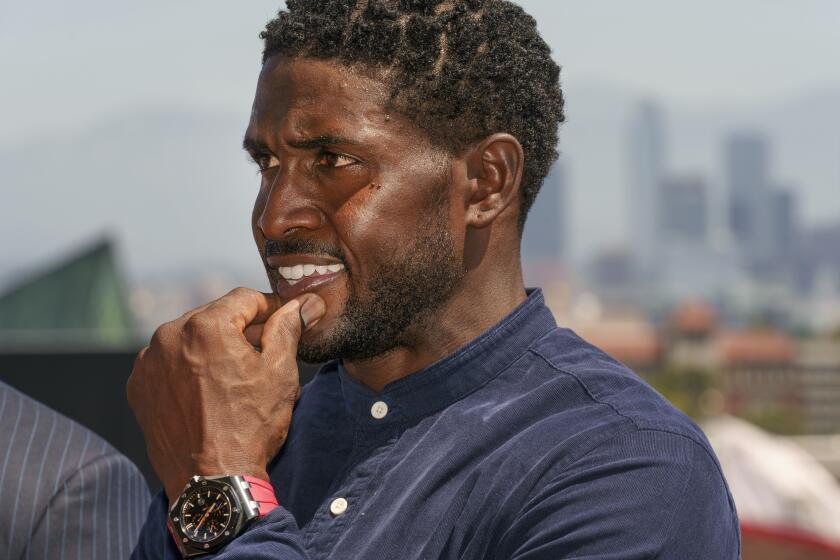That championship formula
When Tiger Woods burst on the scene, Jack Nicklaus made his famous prediction that the young phenom would win 10 Masters titles.
It made sense. Augusta National is wide open, and back then there was no rough. A “first cut” now frames the fairway, but Woods still can pretty much bomb away with impunity.
Sure enough, Woods has three green jackets, and with Augusta National being lengthened, 10 titles might be conservative.
The U.S. Open, however, was another story. Nobody said Woods would win 10 Open titles.
“Our national championship” was supposed to be the toughest major on Woods’ agenda. Narrow fairways and nasty rough would prove to be the great equalizer for Woods’ power. You can’t attack and win on an Open course.
It turns out there is more than one facet to Woods’ game. Everyone knew he could win playing offensive, fire-for-the-pins golf. The recent U.S. Opens show he also can win playing defensive, take-your-par golf.
Woods arrives at Olympia Fields Country Club trying to become the first player to win back-to-back Open titles since Curtis Strange performed the feat in 1988-89.
Last year at Bethpage Black, Woods added a second Open title to go along with his history-making performance at Pebble Beach in 2000. Woods did it by learning how to play on Open venues.
“You’ve just got to plod your way around,” Woods said.
The notion of Woods as a plodder requires some imagination, but that’s what it takes to win a U.S. Open.
Woods didn’t have the knowledge or the skill to do it early in his career. There are the famous shots of him trying to slash his way out of the rough. In fact, in his first Open at Shinnecock Hills in 1995, he injured his wrist trying to hit out of the thick stuff and had to withdraw.
“When I first played the U.S. Open, I knew how to strategize: put myself from Point A to Point B,” Woods said. “But my game didn’t allow me to do that. I didn’t drive it very straight, and on top of that my distance control wasn’t very good. No matter how good you are mentally, if you can’t do those two things you don’t have a chance to compete in the U.S. Open.”
The story has been told many times of how Woods altered his swing to give him more control. He also changed his mindset.
“Tiger has cleverly figured out that his mission is to become more efficient,” NBC golf analyst Roger Maltbie said. “He’s toned down his swing. He’s gained control of distance and tempo. You hear him refer to, ‘I didn’t make a bogey today.’ He is concerned with how he can eradicate errors.”
That is Woods’ mantra when he comes to an Open. He takes great pride in being able to make the 6-footer to save par. Those putts mean more to him than a birdie because they keep him in the game.
“[The Open] isn’t about teeing up a driver and bombs away hit it as hard as you can and go find it,” Woods said. “You’ve got to really strategize and position your golf ball more so than most tournaments we play in. And there’s a reward for that. There’s a reward for making good pars.
“Nowadays if you don’t shoot 4- or 5-under in [a PGA Tour event], you’re going to get lapped. It’s fun to shoot a great round [in an Open] and it’s a 69 or 70. You will move up the board with that number instead of going down.”
Woods went straight up at Pebble Beach, almost to the sky. He came in at 12 under to win by a stunning 15 shots.
It was perhaps the best performance in Open history, but it was somewhat of an aberration. Woods has a high level of confidence at Pebble Beach after playing there so many times.
Woods’ performance at Bethpage was a more typical Open victory. He had to “plod” through tough conditions on a tough course, winning at 3-under. He made his biggest move in the rain during the second round Friday and then held off Phil Mickelson and Sergio Garcia during the weekend.
“The second one by far was a lot more difficult,” Woods said. “I wasn’t playing as well as I did in 2000. I had to rely on different parts of my game to try to bail me out. On top of that, our weather wasn’t very good last year. We were always adjusting to difficult conditions.”
As usual, Woods adjusted better than everyone else. This month he will be tested at Olympia Fields.
The layout reminds NBC analyst Johnny Miller of Southern Hills, site of the 2001 Open in Tulsa. The numerous doglegs and tight fairways gave Woods trouble off the tee. He shot an opening-round 74 and finished tied for 12th.
“Southern Hills would have been fine for Tiger if he wasn’t blocking everything [to the right],” Miller said. “I think Olympia Fields is a good course for Tiger. But he has to have a good week driving the ball, just like he did at Bethpage. If he’s driving the ball, he’s going to win every time. That’s the rule of thumb.”
Woods is looking forward to the challenge. After falling short at this year’s Masters, he has gone winless in three straight majors.
Horrors! What’s wrong with Tiger? Nothing, other than overblown expectations.
“One of the beauties of professional golf is that there are four big tournaments each year,” Woods said.
Woods’ mind-set is squarely on the Open. He’ll take the birdies when they come, but he’ll gladly settle for pars.
That might be another winning formula for Woods. He might not get 10 Open titles, but he certainly isn’t going to stop at two.
More to Read
Get our high school sports newsletter
Prep Rally is devoted to the SoCal high school sports experience, bringing you scores, stories and a behind-the-scenes look at what makes prep sports so popular.
You may occasionally receive promotional content from the Los Angeles Times.






